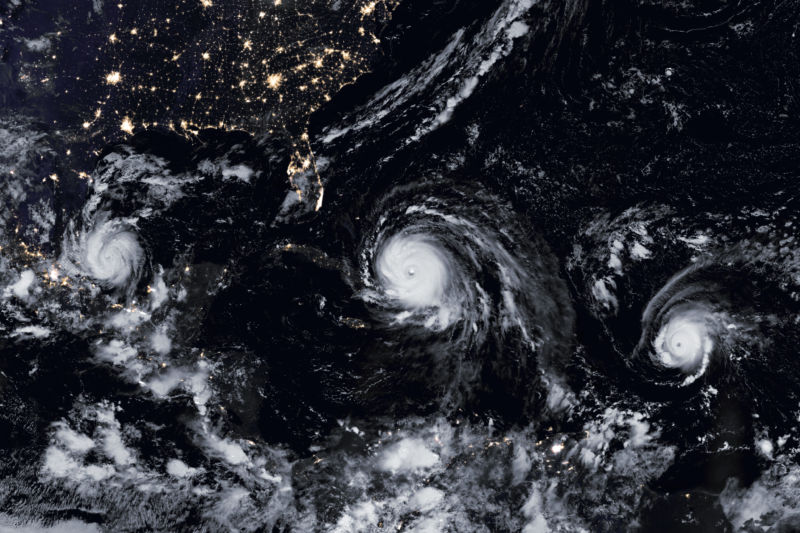What pushed 2017’s Atlantic hurricane season into overdrive?

Enlarge / Left to right, hurricanes Katia, Irma, and Jose on September 8, 2017. (credit: NASA Earth Observatory)
A lot of people would rather forget the 2017 Atlantic hurricane season, and many are no longer alive because of it. Hurricanes Harvey, Irma, and Maria were all destructive when they made landfall, and three other major hurricanes (Category 3 or stronger) mercifully spun out their lives over the ocean. In an average year, the Atlantic sees 2.7 major hurricanes-six is highly unusual.
The birth and life of tropical cyclones in a flowing, churning atmosphere is amazingly complex. But by looking at the past, we've learned there are certain ocean patterns that tend to boost or dampen a hurricane season. To investigate the factors responsible for 2017's hurricane season, a team led by NOAA's Hiroyuki Murakami leaned on that knowledge, together with climate model experiments.
Forecast modelsNorth Atlantic hurricanes are born just above the equator as a low-pressure center. As that low pressure moves westward with the prevailing trade winds, it can continue to organize into a strong cyclone if it has a warm sea surface and if the winds aloft are mild enough to allow the storm to grow upwards.
Read 10 remaining paragraphs | Comments